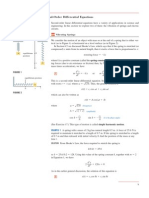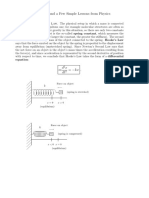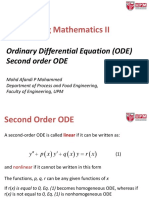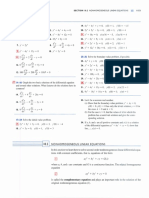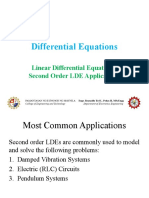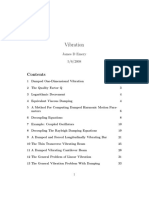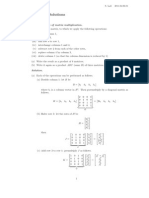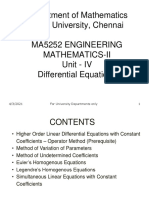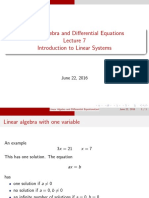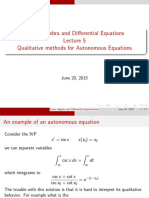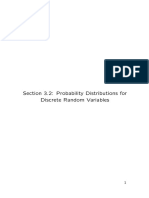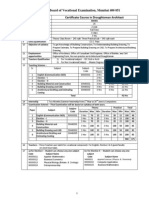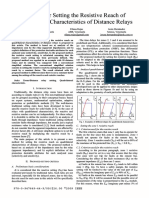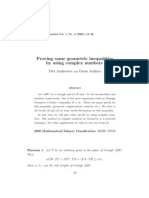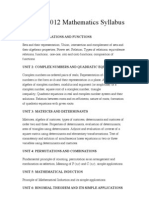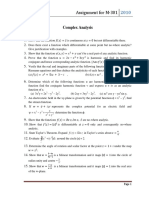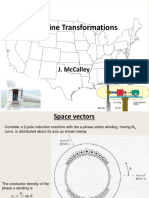0% found this document useful (0 votes)
101 views12 pagesLinear DEs: Constant Coefficients
1) The document discusses linear differential equations with constant coefficients. It examines mass-spring systems and electrical circuits, which can be modeled by second-order linear differential equations.
2) For mass-spring systems, the behavior can be overdamped, critically damped, or underdamped depending on the relationship between the spring constant, mass, and damping coefficient. For forced vibrations, resonance occurs when the driving frequency matches the natural frequency.
3) Electrical circuits can also be modeled as second-order linear differential equations. Using complex numbers, the current in a driven RLC circuit is found to have a maximum magnitude at the resonant frequency.
Uploaded by
Roumen GuhaCopyright
© © All Rights Reserved
We take content rights seriously. If you suspect this is your content, claim it here.
Available Formats
Download as PDF, TXT or read online on Scribd
0% found this document useful (0 votes)
101 views12 pagesLinear DEs: Constant Coefficients
1) The document discusses linear differential equations with constant coefficients. It examines mass-spring systems and electrical circuits, which can be modeled by second-order linear differential equations.
2) For mass-spring systems, the behavior can be overdamped, critically damped, or underdamped depending on the relationship between the spring constant, mass, and damping coefficient. For forced vibrations, resonance occurs when the driving frequency matches the natural frequency.
3) Electrical circuits can also be modeled as second-order linear differential equations. Using complex numbers, the current in a driven RLC circuit is found to have a maximum magnitude at the resonant frequency.
Uploaded by
Roumen GuhaCopyright
© © All Rights Reserved
We take content rights seriously. If you suspect this is your content, claim it here.
Available Formats
Download as PDF, TXT or read online on Scribd
/ 12





